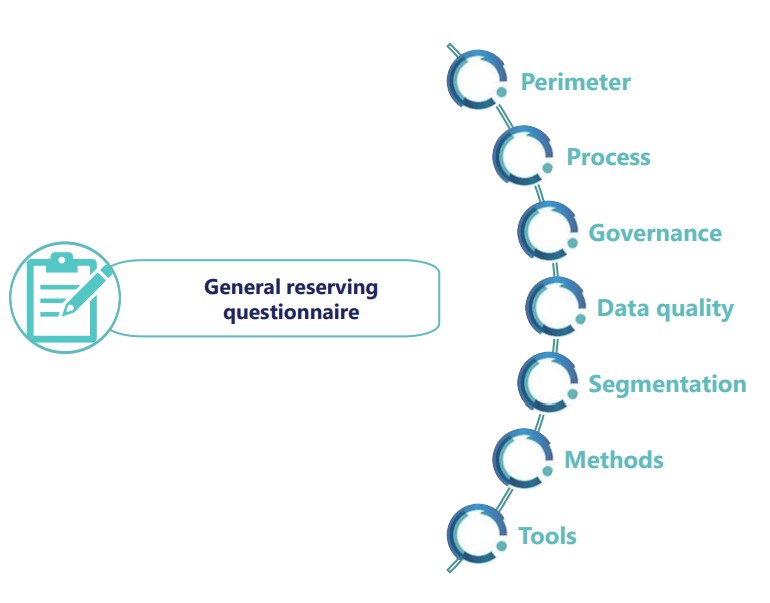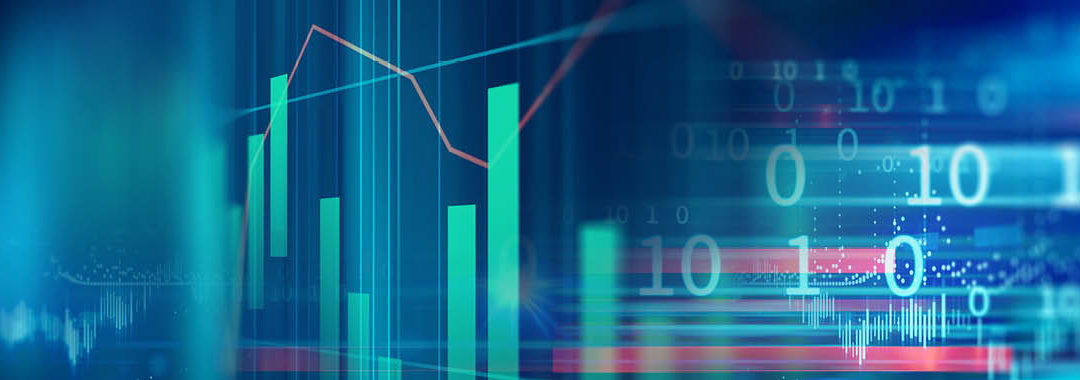What are the reserving best practices to tackle challenges in non-life insurance?
The Addactis experts conducted a nationwide survey of non-life insurers in the French market, in order to update its previous studies and highlight market trends in a rapidly changing environment.
Discover how insurers approach reserving practices, methods, and challenges
From benchmarking tools in the French market to identifying the most widely used reserving methods among actuaries, these surveys provide valuable insights.
Explore market trends, compare your processes with top insurers, and learn how to meet the challenges of an insurance market undergoing rapid transformation:
- Evolution of the reserving process
- Evolution of the level of segmentation
- Market trends and most commonly used reserving methods
- Evolution of process automation

Technical reserve estimation survey
Estimating technical reserves is a major challenge for the industry, especially today, against a backdrop of considerable uncertainty about future claims experience, particularly in non-life insurance.
The resurgence of inflation, climatic drift, the emergence of new risks, technological innovation and the increasing complexity of processes, the economic environment and regulatory constraints are all challenges that are particularly acute in the current context.
The aim of this survey is to find out, directly from those working in the field, how the French market is adapting and organizing itself to meet these challenges.
It is also an opportunity for Addactis to update the information already collected on this subject in the previous survey carried out in 2017, so that we can also draw trends and developments in the French market from this work. Below are the main findings of our survey.
Survey perimeters
Evolution of the reserving process
We can see that the market is making progress in mastering the reserving process.
Overall, governance within participating companies is clear, with well-defined roles and responsibilities, and an associated comitology.
Most players feel that they are well supported by the Actuarial Function, in particular through a proactive role in the various choices and calculations made throughout the reserving process.
The majority of players surveyed are fairly good at formalizing documentation on the reserving process.
100% of players surveyed maintain up-to-date technical documentation and a model user guide. Nearly 70% of respondents use an audit trail (up 20% on the last Addactis survey). And in terms of expert judgment scores, 60% of respondents produce a score to record the expert choices made and situate them in terms of sensitivity.
In response to the French Prudential Supervision and Resolution Authority growing regulatory requirement for data quality, 100% of the companies surveyed have appointed a QDD manager, the majority of whom are assisted by a dedicated team, and almost all have a dedicated comitology.
Evolution of the segmentation level
The level of segmentation remains satisfying.
The organizations surveyed are still comfortable with the segmentation chosen, as in 2017, which is in most cases based on a historical vision. However, less than half of respondents carry out checks to monitor the homogeneity criterion over time, and half produce documentation justifying the segmentation chosen.
In terms of claims separation thresholds, 90% of participating companies have implemented a severity threshold (up 12% on the previous survey), which are often historical or given by reinsurance thresholds. The same was true of global segmentation documentation: half of those surveyed monitor the relevance of thresholds over time.
Market trends
The market is diversifying and becoming more aware of model effects.
Even if there is still a strong imprint of classic methods such as Chain Ladder or Bornhuetter-Ferguson, the market is tending to diversify with new alternative methods for challenging or back-testing studies.

Evolution of process automation
Most players use external tools for data extraction, estimation and results analysis. The survey results also reveal that 75% of participating companies continue to rely heavily on Excel for the reporting phase.
During interviews with respondents, a number of process-related risks were identified, including the loss of information due to high staff turnover, and the difficulty of incorporating economic factors such as inflation or climate change into provision estimates.
Access the full survey media to view all the results and our detailed analysis by filling out the form below.
Our latest content on the topic of Reserving:

How to transform my reserving process?
Discover why it is important to transform your reserving process and the challenges this represents for you.

Reserving: Average cost and Average cost per claim methods
Average cost and average cost per claim reserving methods: how and when to use them? A clear guide for all actuarial professionals and any actuary who is an expert in reserving.

Reserving : Bornhuetter–Ferguson & Loss Ratio methods
It is essential for an insurer to have an accurate and correct estimate of its reserves, which can be achieved using the Bornhuetter-Ferguson and Loss Ratio methods.








